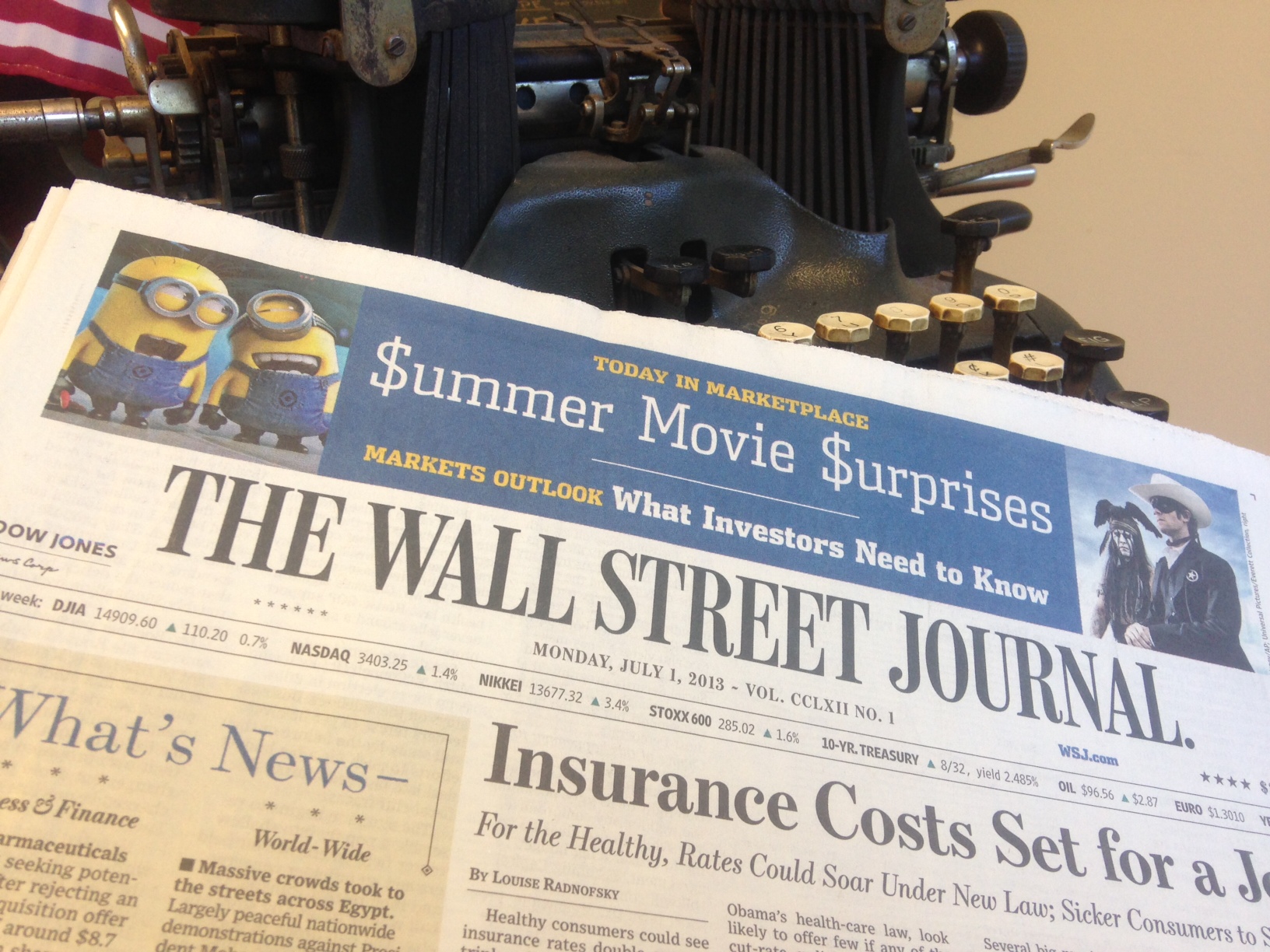With the Wall Street Journal turning 125 years old this week, it is humorous that its tech writer, Christopher Mims, chose to dismiss the lack of “net social benefits” by venture capital (VC) in an article titled “Is Silicon Valley Funding the Wrong Stuff?”
Mims complains new VC deals have “given up on solving problems,” like modernizing our “dilapidated” transportation and energy infrastructure. Unfortunately, the Journal seems set in its their ways to realize venture capital backed companies of 20-somethings do not want to modernize their parents’ infrastructure: they want to create “disruptive innovation” and replace that infrastructure with something much better.
Mims states “that Silicon Valley has jumped the shark,” because the “entire Bay Area appears to have given up on solving anything but its own problems: those afflicting the same 20-somethings who are building these startups.”
Jumping the shark is a negative media term for the moment when an established TV show changes in a significant manner in an attempt to stay fresh, but makes the viewers realize the show has run out of ideas and headed for cancellation. Mims is basically complaining that 20-something venture-backed companies are aiming low at their own generation’s needs rather than high at what he call “net social benefits” to society.
The comment demonstrates that Mims is only speaking for the very narrow demographic that surrounds him at the society to which the Journal is closest. The “Media Kit” that provides demographic data for advertisers states that the 1.6 million average daily reader of the Journal is: 49 years old; 70% male; household income of $272,000; net worth of $1.4 million; and spend nearly an hour a day with the paper.
Comparing the society of the Journal reader to the society of 20-somethings reveals:
- 49 year olds’ life expectancy of 32 years versus 20-something’s 60 years;
- 70% male versus 20-something’s 52% female;
- Annual earnings of $272,000 versus 20-something’s $23,192;
- Net worth of $1.4 million versus 20-something’s trouble making rent this month;
- Hour reading Journal versus 20-something’s all-nighter to launch the new app.
Christopher Mims looks down from the high floor in his glass tower at Dow Jones World Headquarters in New York City and snarls at “Uber,” the San Francisco based Internet taxi/limo service app that I praised last week in “Silicon Valley Still King of Venture Capital” as the VC funding champ for raising $1.2 billion last quarter. Mims sees a dubious company built on software that provides no “net social benefits” to justify its record setting fourth round of venture capital funding.
But 20-somethings that visit New York City can use the Internet sharing economy of Uber to negotiate with private parties to get a cheap ride in a nice luxury car to the city and with Airbnb to negotiate with other private parties to stay in a cheap bedroom in a nice part of town.
This collaborative consumption helps 20-somethings solve their “own problems” of not making much money. But sharing economy also creates tens of thousands of Uber and Airbnb small business “hosts”.
Besides the personal “net social benefits” of making travel more affordable and creating a huge number of new businesses, the shared economy are dramatically increasing the use of underutilized resources.
From 1970 to 2007 the number of total miles driven in the United States rose consistently from 1 trillion to 3 trillion. Yet the miles driven fell by 2% in 2008 and have been flat for the last five years. On a population adjusted basis, total vehicle miles driven per person peaked in 2005 and are down -9.25% over the last eight-and-a-half years ago. Per person miles driven is down the level of January 1995. A big part of this change had to be from sharing.
The U.S. Energy Information Agency had to reverse its long term expectation of rising CO2 emissions in May of this year. It now predicts that American CO2 emissions will decline by 0.2% per year on average from 2005 to 2040; as compared to an average increase of 0.9% per year from 1980 to 2005. It credited most of the decline to lower expected economic growth, increasing use of renewables; automobile efficiency improvements; slower growth in electricity demand; and more use of natural gas. The EIA never mentioned the trend of less vehicle miles driven per person since 2007.
A Google Internet search came up with 38,800,000 hits for “Wall Street Journal articles on climate change,” so Journal readers must be very interested in the subject. But I got “No results found” for “Wall Street Journal sees shared economy reducing climate change” or even “uber to reduce climate change”.
It is not the average 49 years old male with $272,000 and a net worth of $1.4 million spending an hour a day reading the Journal that has any vision of just how big and socially beneficial the shared-economy will be. Christopher Mims and his readers like to drive their own personal cars and stay in nice hotels, because they can.
Venture capitalists pumped $9 billion into mostly 20-something Silicon Valley start-ups last quarter because they want to participate in the disruptive change from 20-somethings that will create “net social benefits” we do not even know that we want.
From July 15th to July 29th, Chriss Street will be teaching “Entrepreneurship and Capitalist Business Strategy” at Ho Chi Mihn University in Vietnam

COMMENTS
Please let us know if you're having issues with commenting.